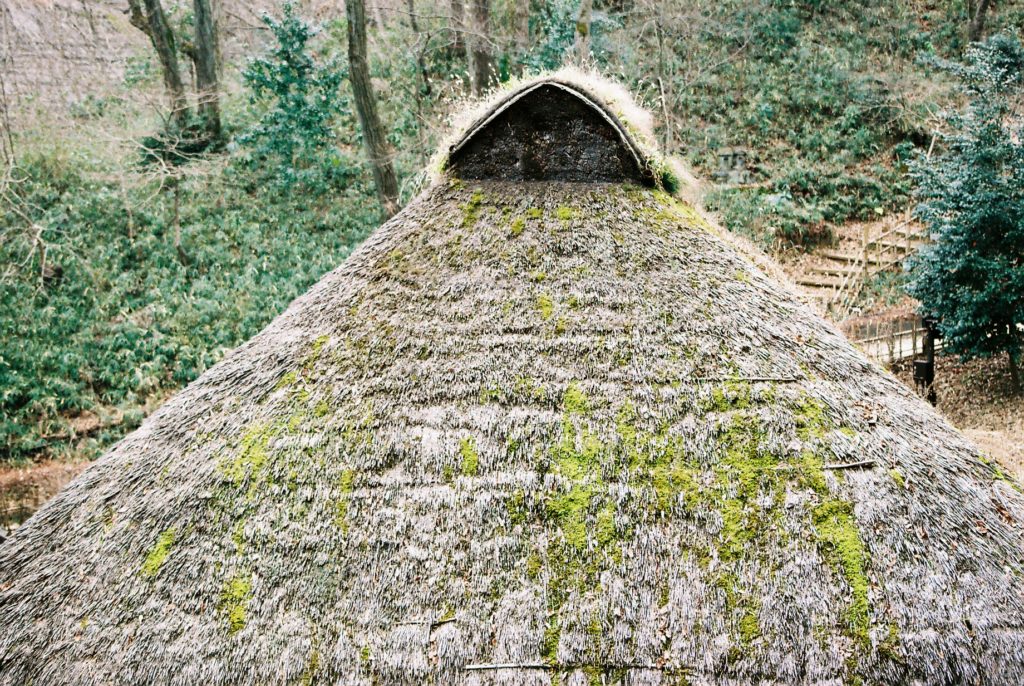Ascending a winding valley path at the Nihon Minka-en in Ikuta Park, Kawasaki, the rich scent of burning charcoal fills the air. Like a strange, ancestral barbecue, it’s confusingly familiar yet mysteriously foreign. Appealing to both memory and imagination, it has the effect of dislocating you from the present to a distant place and time – a useful trick for a museum dedicated to preserving the folk houses (Minka) of the Edo period.
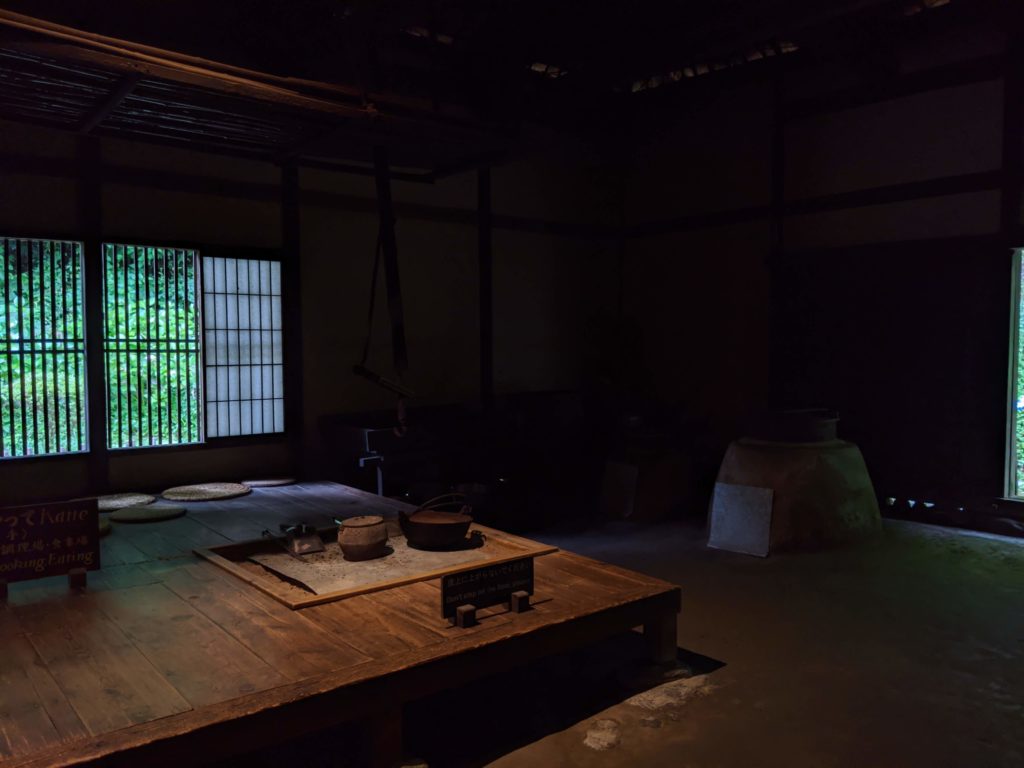
Established in 1967, the Minka-en grew out of a burgeoning interest in traditional houses that peaked in the mid-Showa era. This was ironically coincident with the great economic growth period that saw many Minka demolished in the name of progress. Plans to raze one of the oldest surviving farmhouses in Kanagawa Prefecture triggered Kawasaki City to set in motion plans to develop an open-air Minka museum.
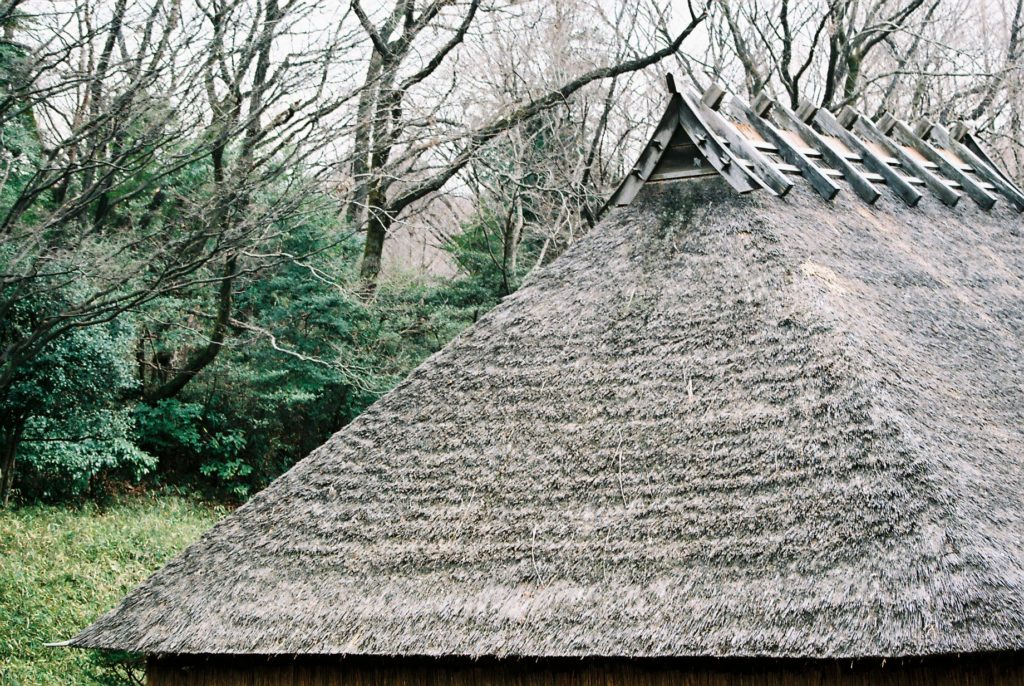
Though the original unrealized plan envisaged nearly 100 folk houses from Central Japan laid out over Ikuta Park, the current twenty five buildings (mostly houses) present an incredible survey of four regional village areas: Shin-Etsu, Kanto, Kanagawa and Tohoku.
Many visitors are likely familiar with the UNESCO listed Minka villages of Shirakawa-gō and Gokayama at the border of Toyama and Gifu Prefectures. With their vast thatched roofs in the gasshō-zukuri (praying hands) arrangement to help shed high snowfall, this impressive site is hugely valuable in its preservation of a particular rural lifestyle. Yet it represents only one geographically distinct sample of Minka.
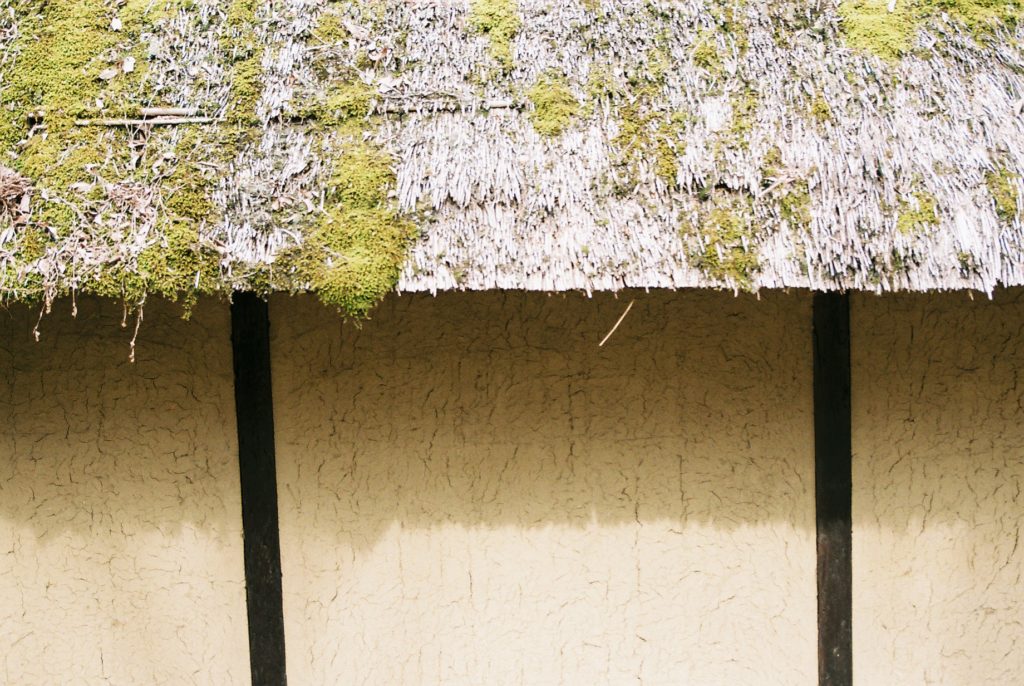
Specifically, Minka refers to the vernacular houses of Japan built for the classes below Samurai. While there are common patterns, this broad designation and the huge variance in climate, geography and raw materials has produced great diversity in the approaches to building houses. In some instances, adjacent hamlets might share the same roof form but use distinct materials due to microclimates or access to particular materials.
A small but information rich exhibition hall at the entry to the museum clearly outlines four main settlement patterns and the diverse house forms they generate. Equally, the exhibit ties together the houses through their common elements – such as their nail-free timber structures and zoned use between an earthen floored ‘doma’ for cooking, storage and livestock; and a raised timber floor ‘ima’ for living and sleeping.
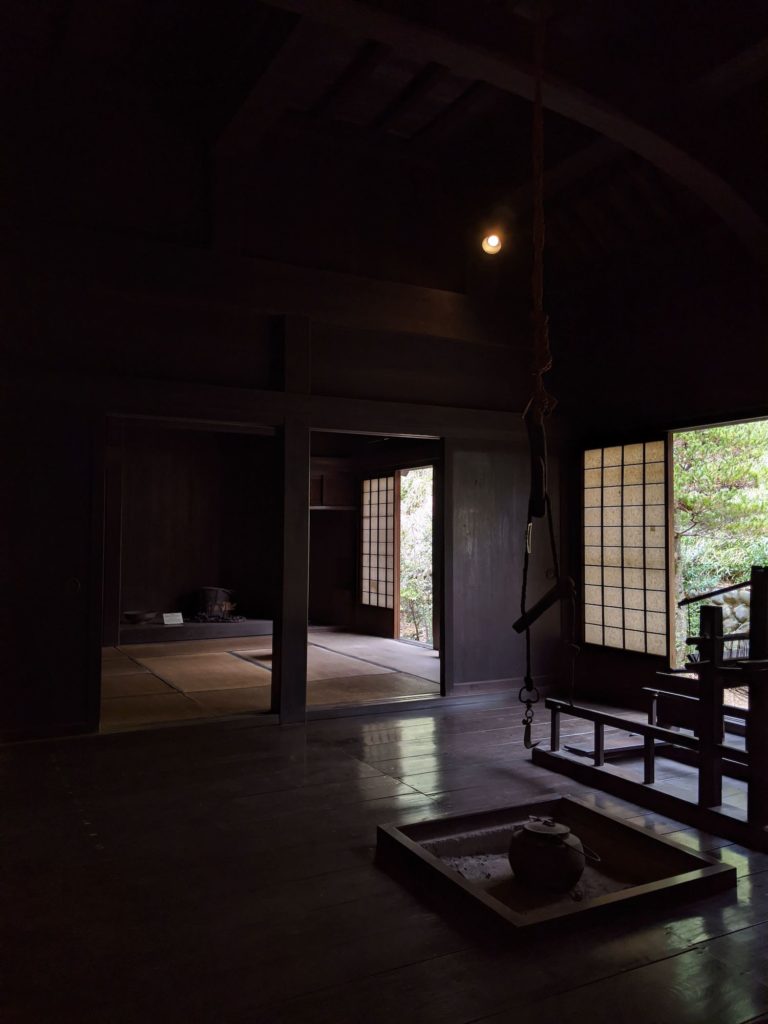
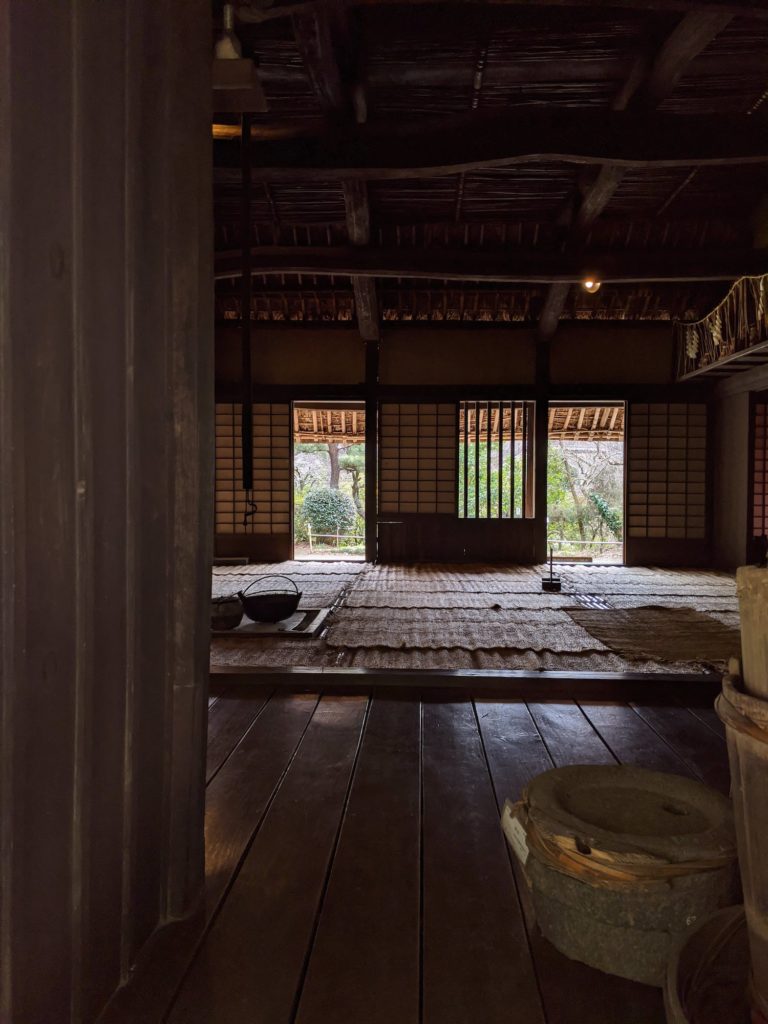
It is from irori (sunken hearths) in the raised platform areas, the smoky aroma is generated. A dedicated team of volunteers rotate between the houses, tending a few small fires each day that play an important role in their preservation. Smoking the thatch discourages the nesting of insects and birds, while also drying out the ceiling structure – preventing rot and fungus.
While a great number of institutional or religious buildings are preserved for their cultural or architectural value, the spaces of ordinary people – unless built of hardy materials – often disappear from contemporary society. It’s said you can learn a lot about people by observing the way common-folk live. Luckily spaces such as the Nihon Minka-en perform an important role in keeping ancient but fragile folk houses accessible – to the nose as well as the eye.
